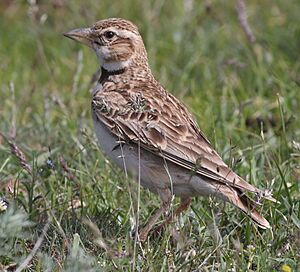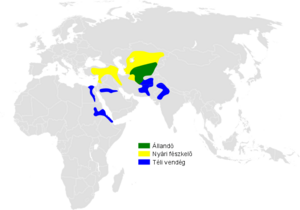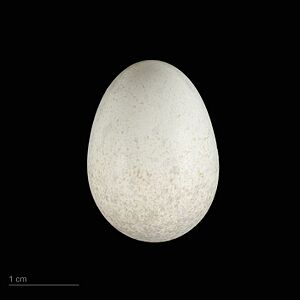Bimaculated lark facts for kids
Quick facts for kids Bimaculated lark |
|
|---|---|
 |
|
| Conservation status | |
| Scientific classification | |
| Genus: |
Melanocorypha
|
| Species: |
bimaculata
|
 |
|
| Synonyms | |
|
|
The bimaculated lark (Melanocorypha bimaculata) is a type of bird that lives in warm countries. It breeds in areas from Turkey all the way into Central Asia. This bird is like a close relative to another bird called the calandra lark.
Contents
About the Bimaculated Lark
What's in a Name?
Scientists give animals special names to help identify them. This is called taxonomy. The bimaculated lark's scientific name is Melanocorypha bimaculata.
The first part, Melanocorypha, comes from Ancient Greek. Melas means "black," and koruphos is an old word for a type of bird, like a lark.
The second part, bimaculata, comes from Neo-Latin. It means "two-spotted." This name is a good hint about how the bird looks! Sometimes, people also call it the "Eastern calandra lark," but it's important not to confuse it with the actual calandra lark species.
What Does It Look Like?
The bimaculated lark is a fairly large and strong bird. It is about 16 to 18 centimeters (about 6 to 7 inches) long.
When you see it on the ground, it looks mostly grey with streaks on its back. Its belly is white. The "two-spotted" part of its name comes from two small black patches on the sides of its chest. It also has a white stripe above its eye, called a supercilium.
When this lark flies, you can see its short, wide wings. These wings are grey-brown underneath. It has a short tail with a white tip, but not white edges. These wing and tail patterns help tell it apart from its relatives that live further west.
What Does It Sound Like?
The song of the bimaculated lark sounds a bit like the calandra lark's song, but it's often described as being a bit harsher or stronger.
Where Do Bimaculated Larks Live?
Home and Travel
The bimaculated lark can be found from central Turkey across to southern Kazakhstan and Kyrgyzstan. It also lives in parts of Iran, Afghanistan, Israel, Lebanon, Syria, and Iraq.
These birds are mostly migratory. This means they travel long distances. In winter, they fly to warmer places like northeast Africa. They also spread out across the Middle East, reaching Pakistan, India, and even Tibet. It's very rare to see one in western Europe.
Their Favorite Places
Bimaculated larks like to live in stony, semi-desert areas. They also enjoy farmland at higher altitudes.
They build their nests on the ground. A female lark usually lays 3 or 4 eggs.
What Do They Eat?
These birds eat seeds, which they find on the ground. They also eat insects, especially during the breeding season when they need extra energy for their young. In winter, they often gather in groups.



